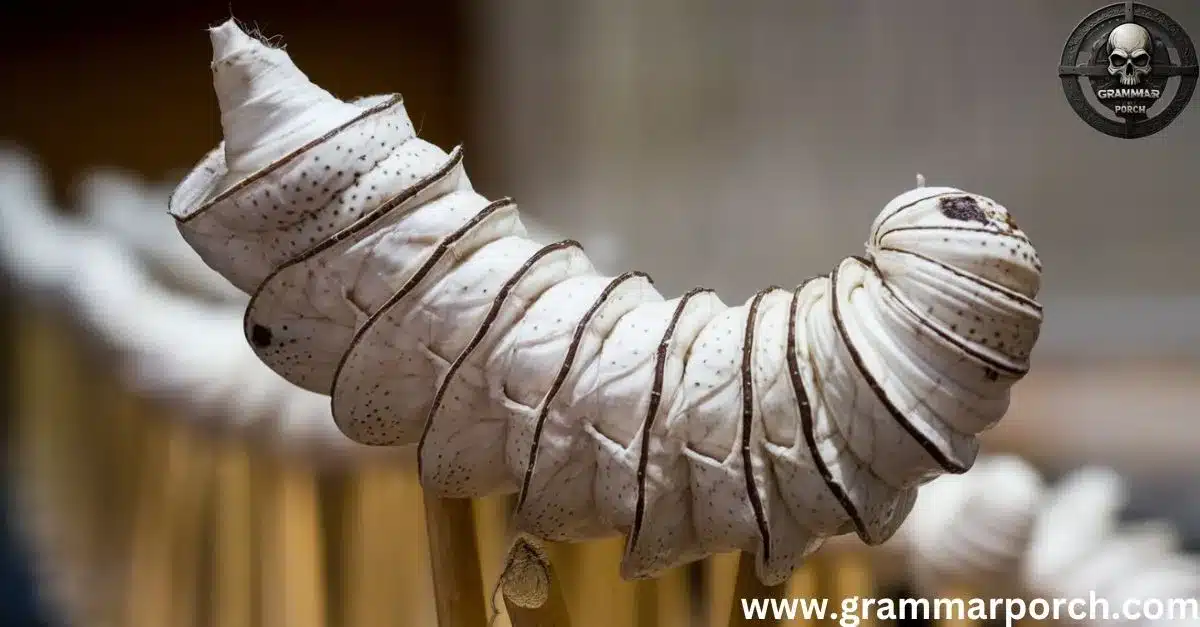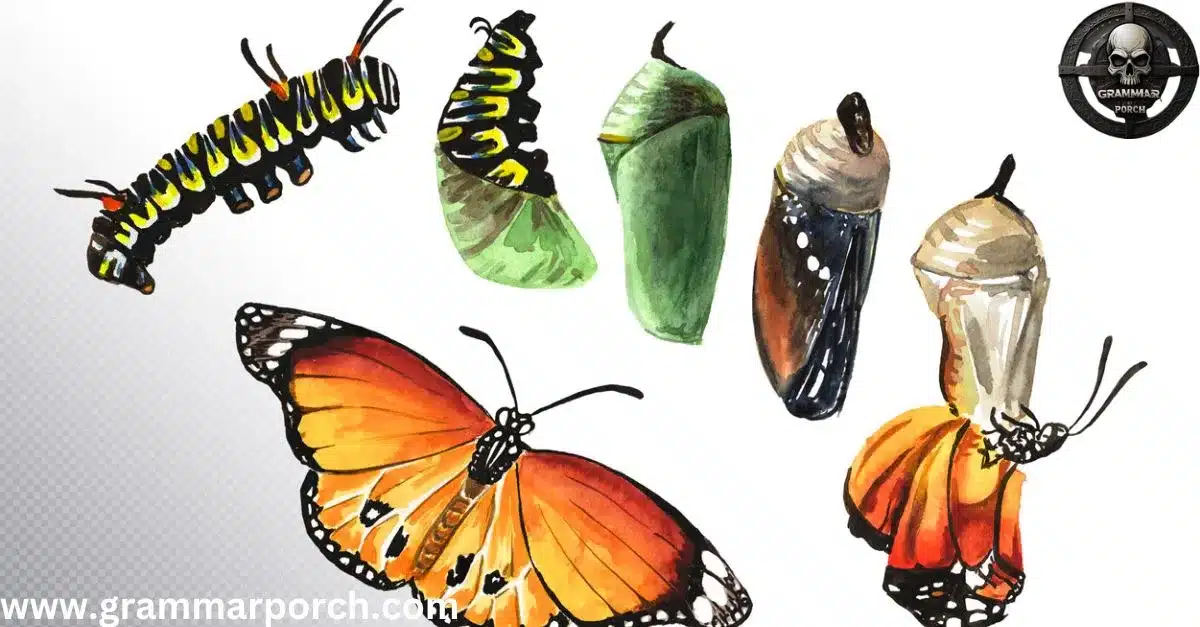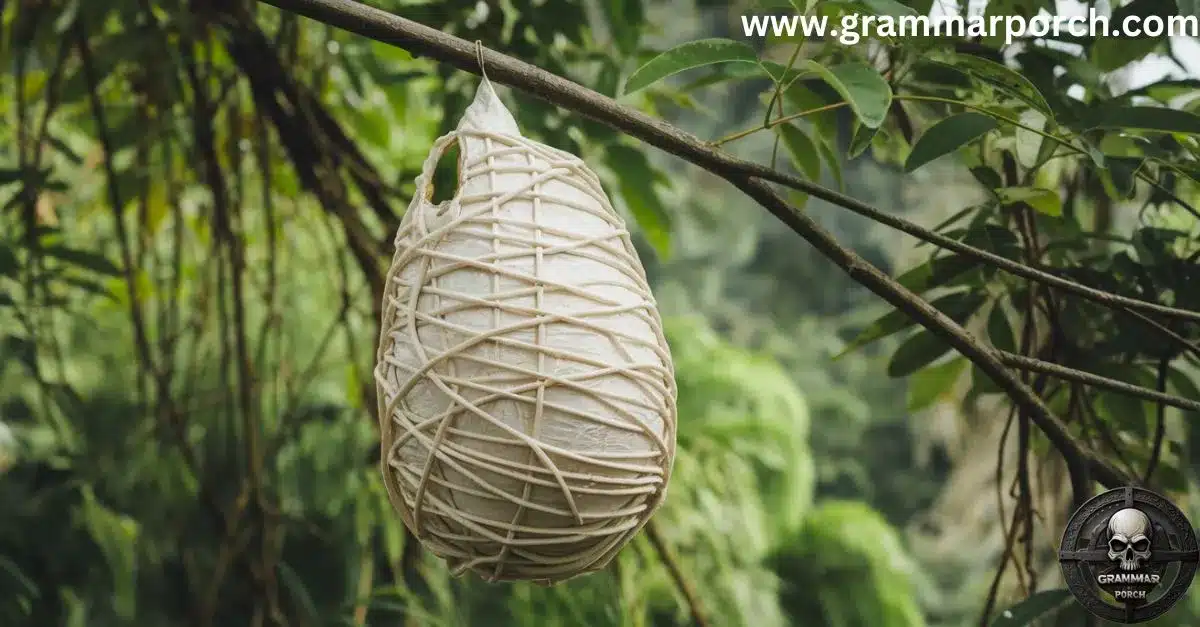The confusion between cacoon vs cocoon stems from their similar pronunciation and appearance. When we speak these words aloud, they sound identical, leading many writers to use them interchangeably. This phonetic similarity often results in spelling mistakes, especially in informal writing and social media posts.
English language learners and native speakers alike struggle with this distinction because the ‘a’ and ‘o’ sounds in many English words can be ambiguous. The prevalence of both spellings online has further muddied the waters, making it harder for people to identify the correct form.
What is a “Cacoon”?
A cacoon is simply a misspelling of the word cocoon. Despite its frequent appearance in casual writing and social media, it has no legitimate meaning in standard English. The confusion likely arises from the natural tendency to phonetically spell words as we hear them.
This common error persists partly because of its visual similarity to the correct spelling and partly because some brands and products have adopted this spelling variation for marketing purposes. However, in formal writing, academic contexts, or professional communication, using “cacoon” would be considered incorrect.
What is a “Cocoon”?

A cocoon is a natural protective covering that certain insects, particularly moths and butterflies, create during their metamorphosis stage. This protective case, typically made of silk or similar materials, provides shelter and safety during the crucial transformation from larva to adult form.
The term has expanded beyond its biological origins to encompass any protective or isolating wrapper or casing. In modern usage, it can describe both physical and metaphorical forms of protection or isolation. This versatility has made it a rich source of metaphors in literature and everyday language.
From Larva to Butterfly: The Role of a Cocoon
The transformation process of insects through their cocoon stage represents one of nature’s most fascinating phenomena. During this period, the insect undergoes dramatic physical changes within the safety of its silken fortress. The cocoon provides not just protection from predators but also maintains optimal conditions for metamorphosis.
Inside the cocoon, remarkable biological processes occur as the creature’s body breaks down and rebuilds itself. This process can take anywhere from a few days to several months, depending on the species and environmental conditions. The timing often synchronizes with seasonal changes to ensure optimal conditions for the adult insect’s emergence.
Case Study: The Silk Moth
The silk moth (Bombyx mori) represents one of nature’s most remarkable examples of cocoon creation. These industrious insects produce cocoons that have shaped human civilization through silk production. Each silk moth caterpillar spins approximately 1,000 yards of silk filament to create its cocoon, demonstrating nature’s incredible engineering.
The commercial silk industry depends entirely on these natural architects. Silk farmers carefully monitor the moths’ development, harvesting the cocoons at precisely the right moment to maintain the silk’s integrity. This delicate balance between natural processes and human industry has existed for over 5,000 years.
The Lifecycle of a Butterfly: A Journey Through Phases

The journey from egg to adult butterfly showcases one of nature’s most dramatic transformation processes. Unlike moths, butterflies form a chrysalis rather than a silk cocoon, though many people use the terms interchangeably. This process of complete metamorphosis takes between 10 to 30 days, depending on the species and environmental conditions.
Each stage of development serves a crucial purpose in the butterfly’s life cycle. The transformation involves complex hormonal changes and cellular reorganization, all occurring within the protective shell of the chrysalis. This remarkable process exemplifies the sophistication of natural biological systems.
Exploring ‘Cocoon’ in Action: Usage as a Verb
The word cocoon has evolved beyond its nominal form to become a versatile verb. When used as an action word, it describes the act of encasing or protecting something or someone, often in a metaphorical sense. Modern usage frequently appears in contexts related to comfort, safety, and isolation.
Here’s a comprehensive comparison table of how ‘cocoon’ functions as both noun and verb:
| Usage Type | Definition | Example |
| Noun (literal) | Protective case for metamorphosis | “The silk moth spun its cocoon.” |
| Noun (metaphorical) | Safe or isolated space | “Their home became a cocoon during the winter.” |
| Verb (literal) | To encase in a protective covering | “The caterpillar cocooned itself.” |
| Verb (metaphorical) | To wrap or envelop protectively | “Parents often cocoon their children from harm.” |
Cacoon vs Cocoon: The Definitive Difference
To clearly understand the distinction between these terms, let’s examine their key differences:
| Aspect | Cacoon | Cocoon |
| Spelling Status | Incorrect spelling | Correct spelling |
| Dictionary Recognition | Not recognized | Officially recognized |
| Etymology | None (misspelling) | From French ‘cocon’ |
| Usage Context | Informal error | Formal and informal contexts |
| Scientific Validity | None | Scientifically accurate term |
Origins and Cultural Significance of Cacoon vs Cocoon

“Cacoon”
“Cacoon” has no legitimate etymological origins as it’s a misspelling. However, its persistence in modern usage can be traced to:
- Phonetic spelling tendencies in English
- Common spelling confusion with similar-sounding words
- Regional pronunciation variations
- Informal internet usage and social media
- Brand names and marketing choices
“Cocoon”
The word “cocoon” has a rich etymological history:
- Mid-17th century: First appeared in English
- French origin: Derived from “cocon”
- Provençal influence: From “coucoun”
- Medieval Latin connection: Related to “coconus”
- Ultimate source: Ancient Greek “kokkos” meaning “berry, kernel”
Synonyms and Related Terms
For Cocoon (Noun):
- Chrysalis (specifically for butterflies)
- Pupa
- Shell
- Case
- Envelope
- Covering
- Casing
- Protective layer
- Silk shell
- Enclosure
For Cocoon (Verb):
- Envelop
- Wrap
- Encase
- Shield
- Protect
- Shelter
- Enshroud
- Enfold
- Swaddle
- Insulate
In Metaphorical Context:
- Haven
- Sanctuary
- Refuge
- Safe space
- Shelter
- Nest
- Retreat
- Hideaway
- Buffer
- Bubble
Examples in Context

“Cacoon” in Context (Common Mistakes)
- “She likes to cacoon herself in blankets during winter.” (incorrect)
- “The caterpillar started spinning its cacoon yesterday.” (incorrect)
- “Their home became a protective cacoon during the storm.” (incorrect)
- “Scientists studied the cacoon formation process.” (incorrect)
- “The silk cacoon took weeks to form.” (incorrect)
- “They cacooned themselves away from society.” (incorrect)
- “The artist created a creative cacoon in her studio.” (incorrect)
- “The cacoon protected the developing moth.” (incorrect)
- “Children feel safe in the cacooning environment.” (incorrect)
- “The butterfly emerged from its cacoon in spring.” (incorrect)
“Cocoon” in Context (Correct Usage)
- “The silkworm spun a delicate cocoon around itself.”
- “She loved to cocoon herself in soft blankets while reading.”
- “The protective cocoon sheltered the developing moth from predators.”
- “Their apartment became a comfortable cocoon during the lockdown.”
- “Scientists observed the cocoon formation process with fascination.”
- “The artist created a creative cocoon in her private studio space.”
- “Parents naturally want to cocoon their children from harm.”
- “The moth emerged from its silken cocoon after three weeks.”
- “The spa offered a cocooning treatment for ultimate relaxation.”
- “Urban dwellers often seek to cocoon themselves from city noise.”
FAQs
Why do people often misspell cocoon as cacoon?
The phonetic similarity and the common ‘a’ sound in English leads to this frequent spelling error.
Can all butterflies make cocoons?
Actually, butterflies form chrysalises, while moths create cocoons – though both serve similar purposes.
How long does the cocoon stage last?
The duration varies by species, typically ranging from a few days to several months.
Is cocoon used only in biological contexts?
No, it’s commonly used metaphorically to describe protective or isolated environments.
What’s the difference between a cocoon and a chrysalis?
A cocoon is made of silk or other materials, while a chrysalis is the actual skin of the butterfly pupa.
Conclusion
The distinction between cacoon vs cocoon helps maintain clarity in communication and writing. While “cacoon” represents a common spelling error, “cocoon” remains the correct term for both literal and metaphorical uses. This knowledge enhances our appreciation for both proper language usage and the remarkable natural process the word describes.
Remember that language evolution continues to shape how we use words like cocoon, expanding their meaning beyond biological contexts to encompass broader concepts of protection, transformation, and isolation. Whether discussing the silk moth’s architectural marvel or describing a cozy reading nook, using the correct spelling ensures your message is both clear and credible.

Larry is an experienced blogger with a passion for simplifying grammar. With years of expertise in writing and language, he shares insightful tips on punctuation, synonyms, and the intricacies of English grammar at **Grammar Porch**. His approachable style helps readers improve their writing skills with ease.

